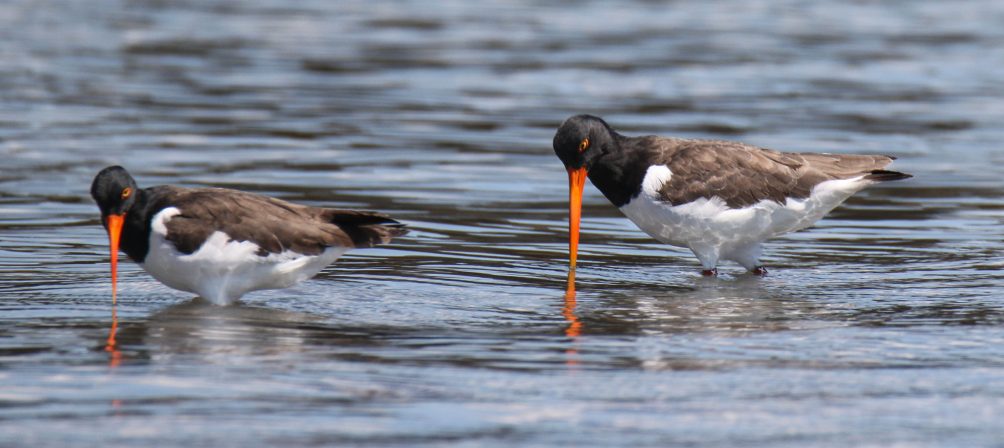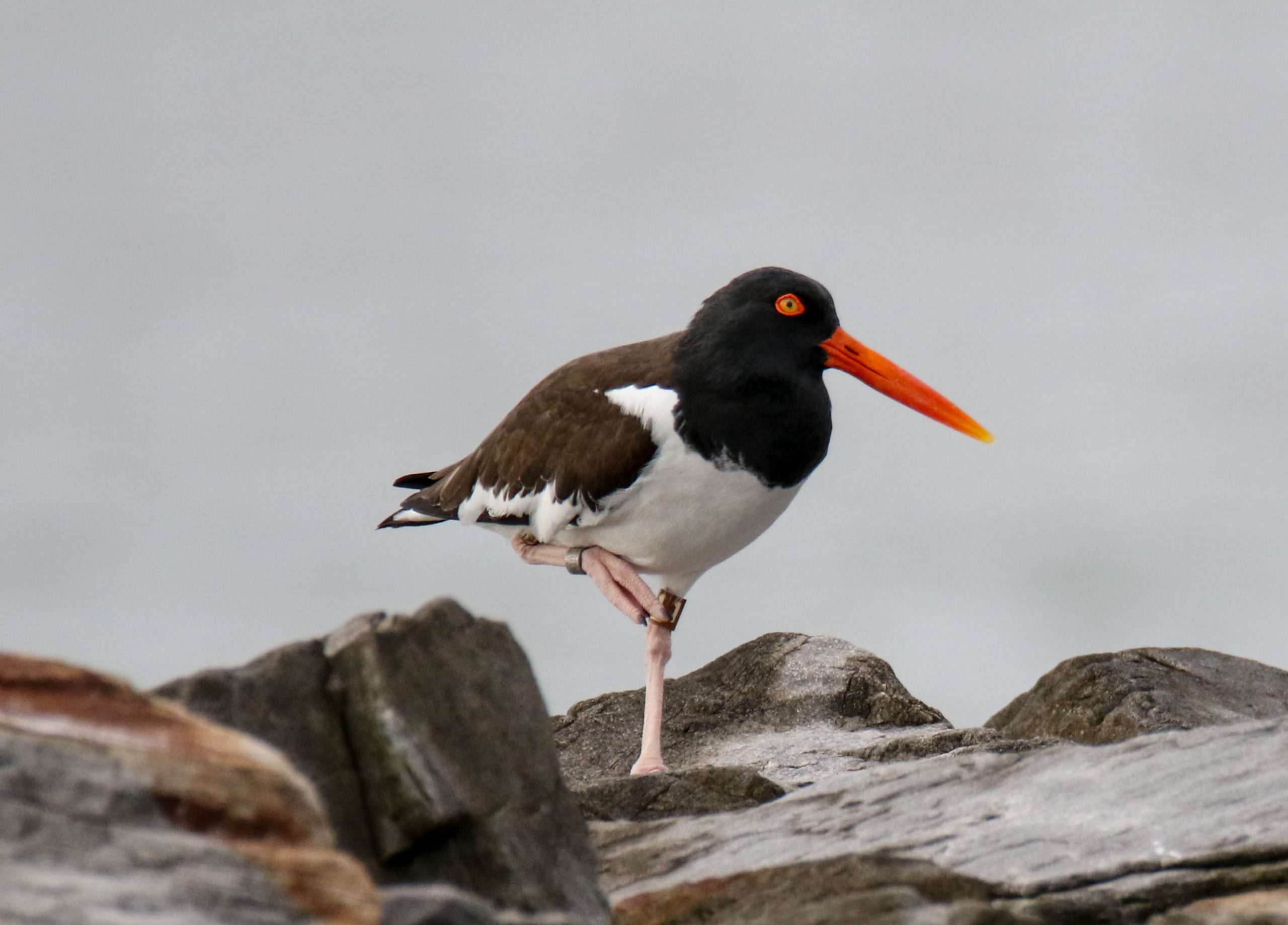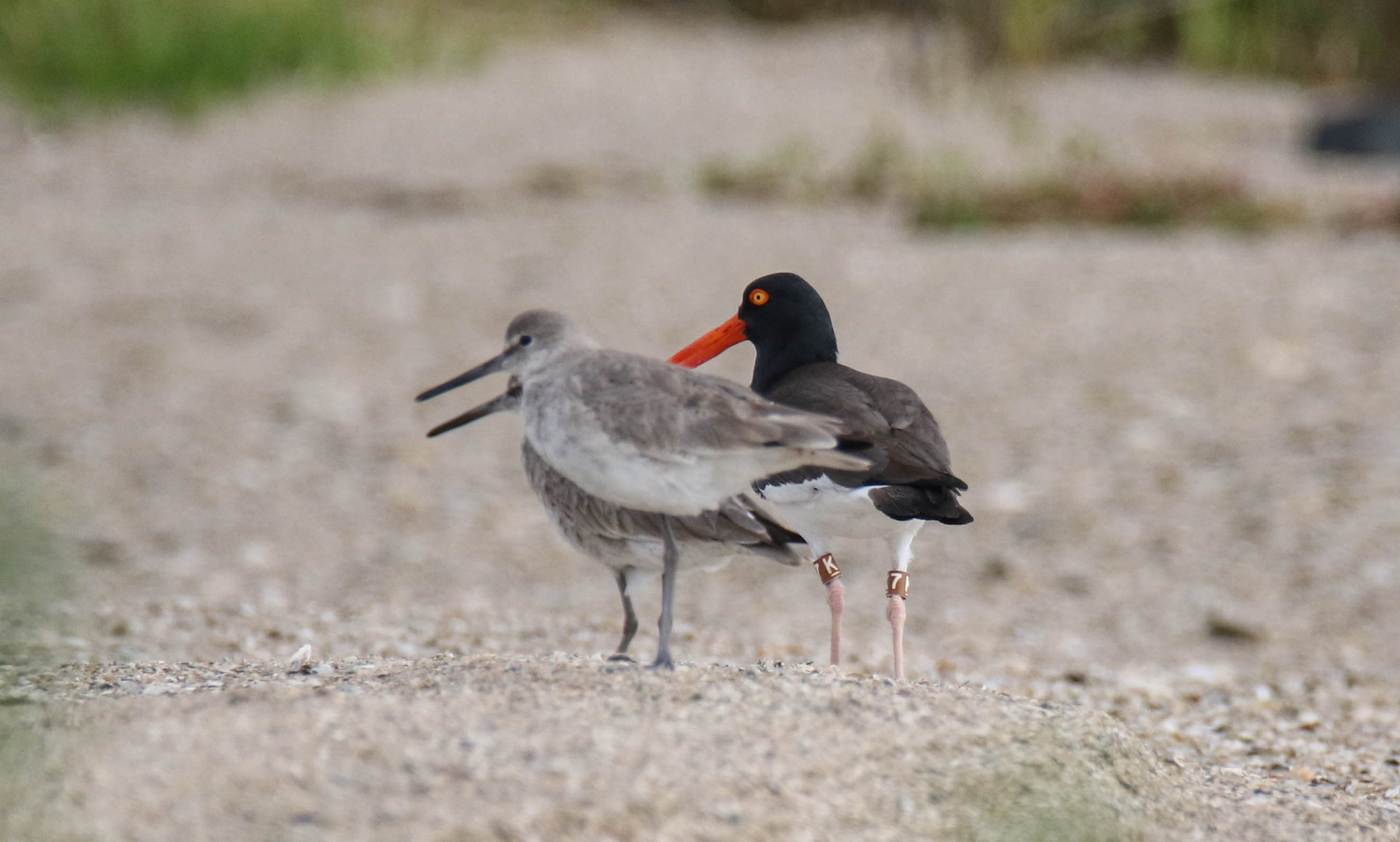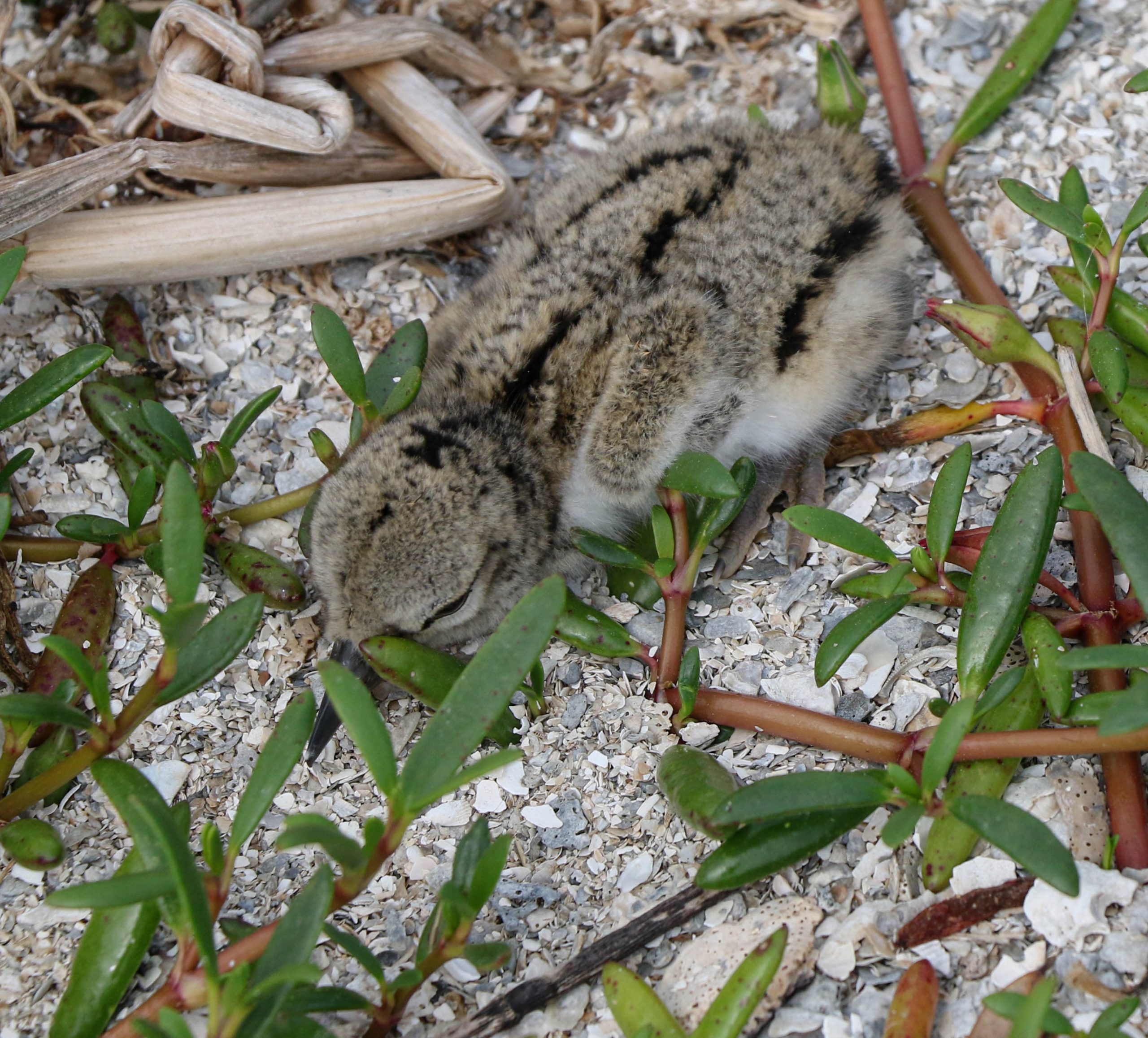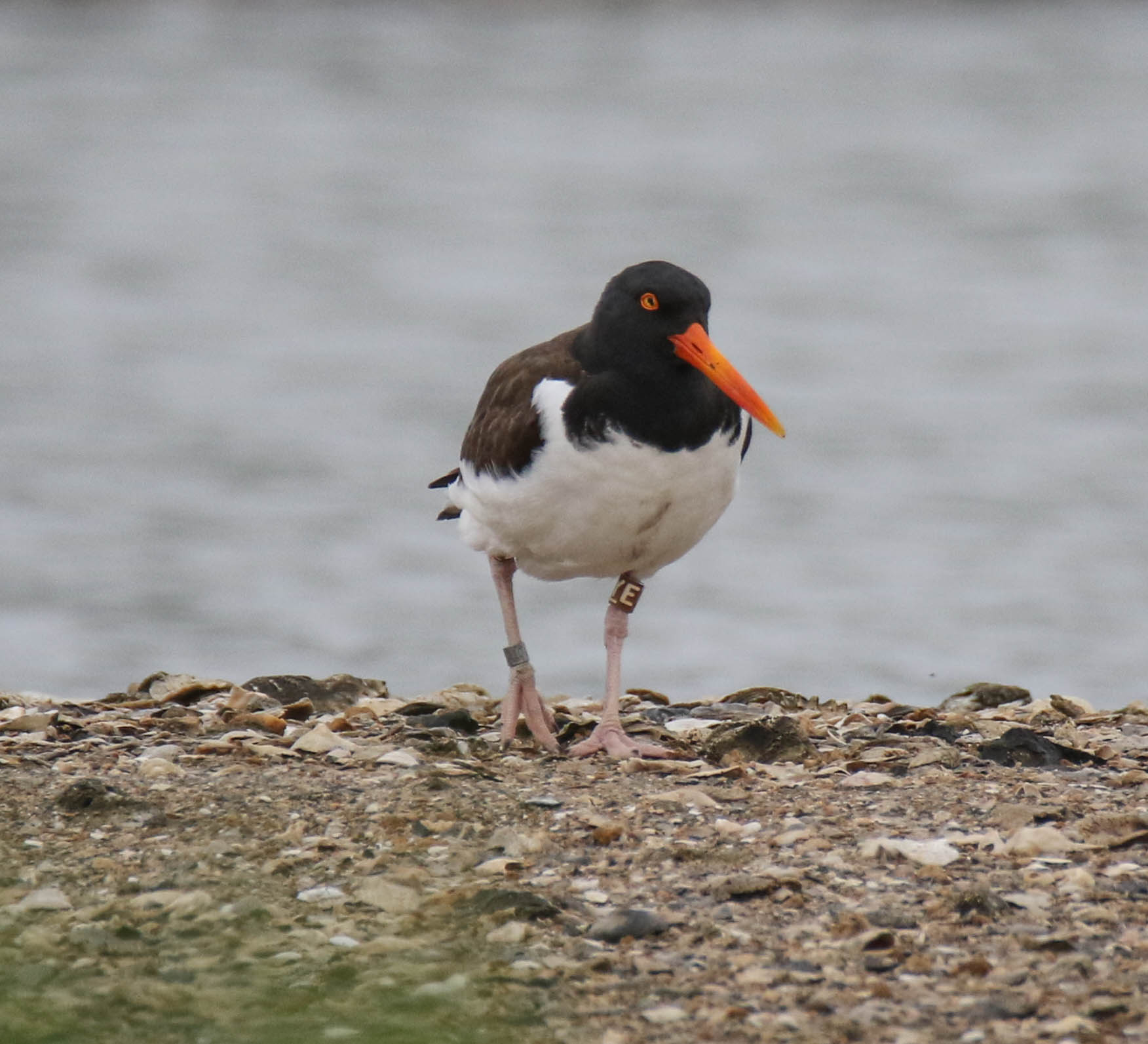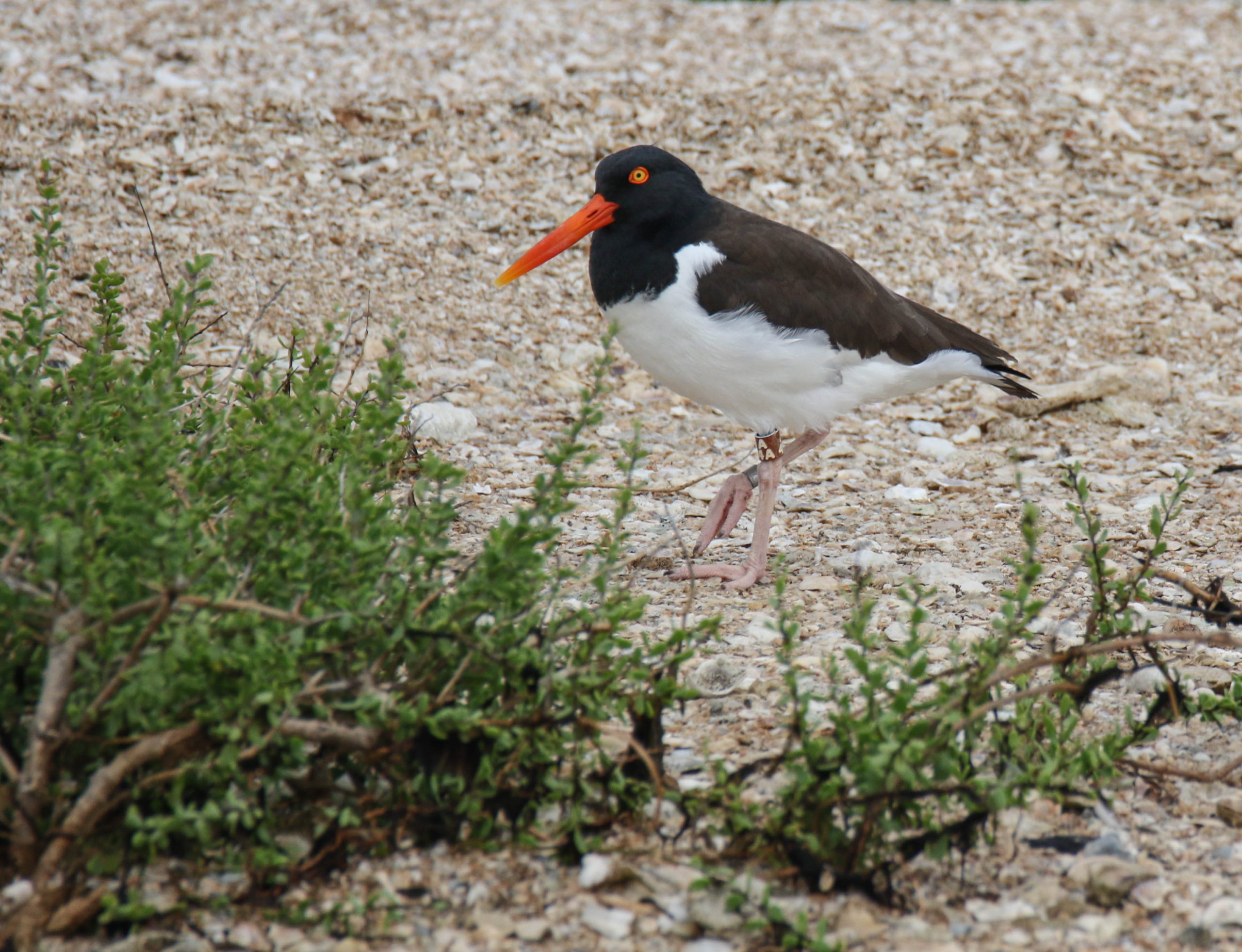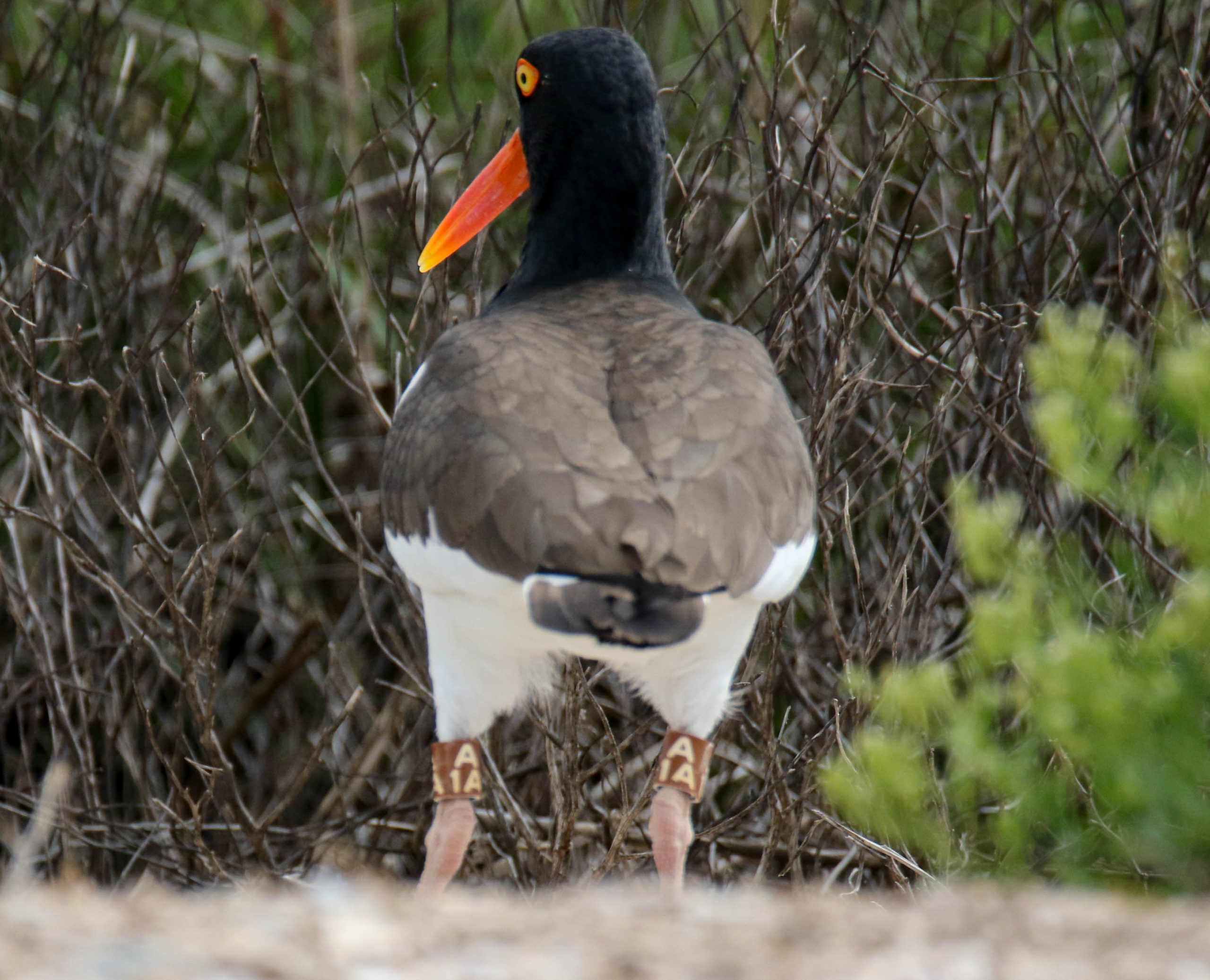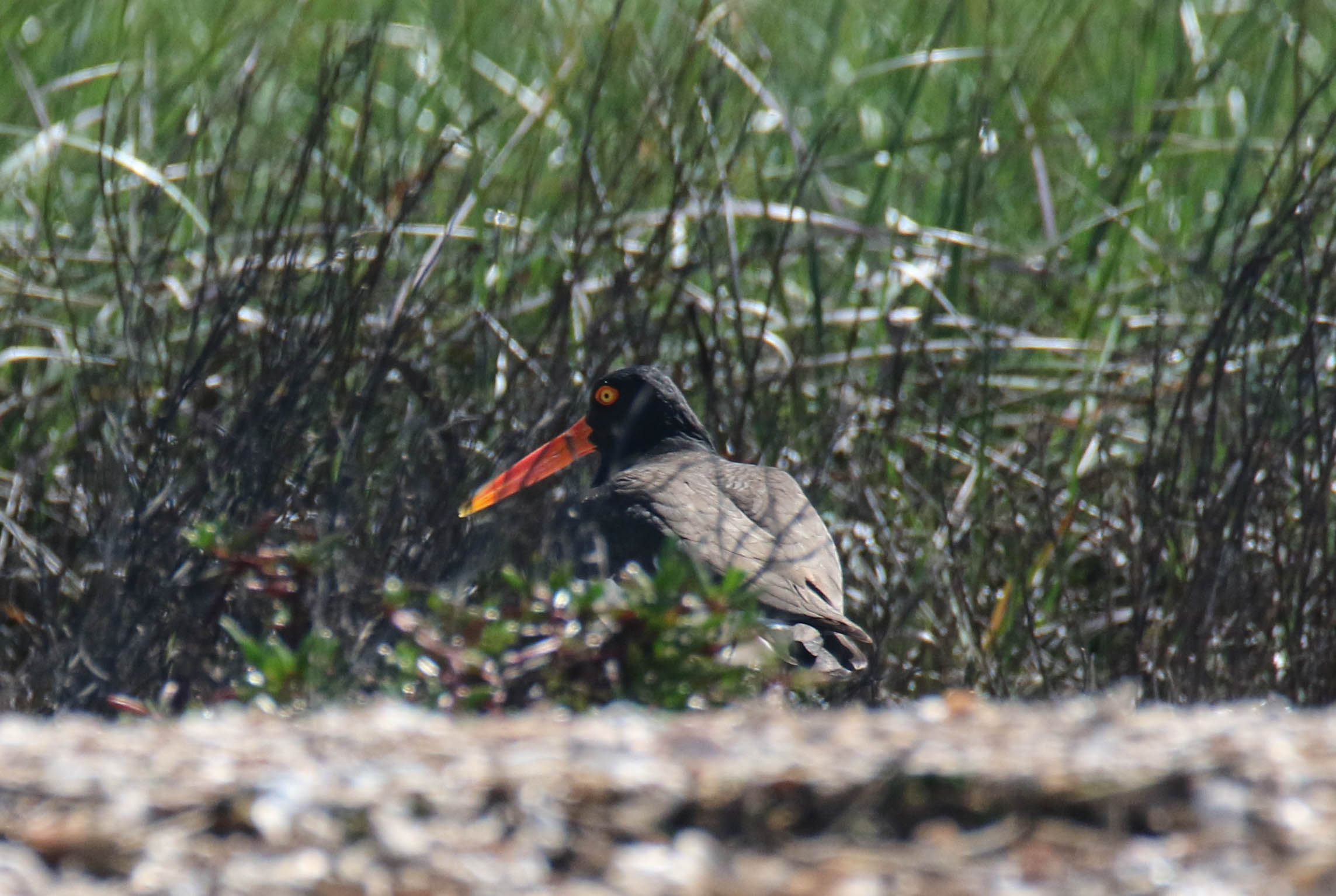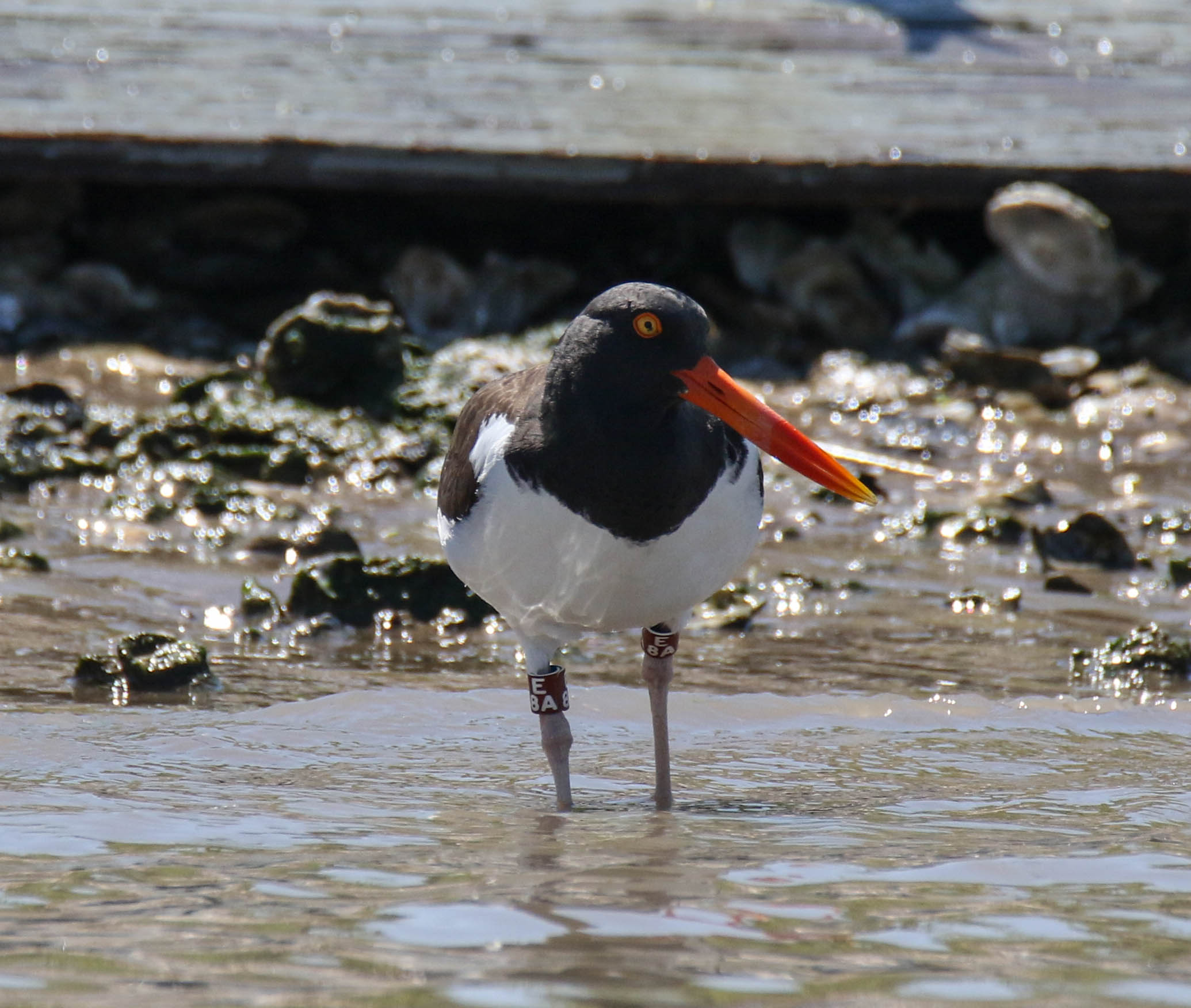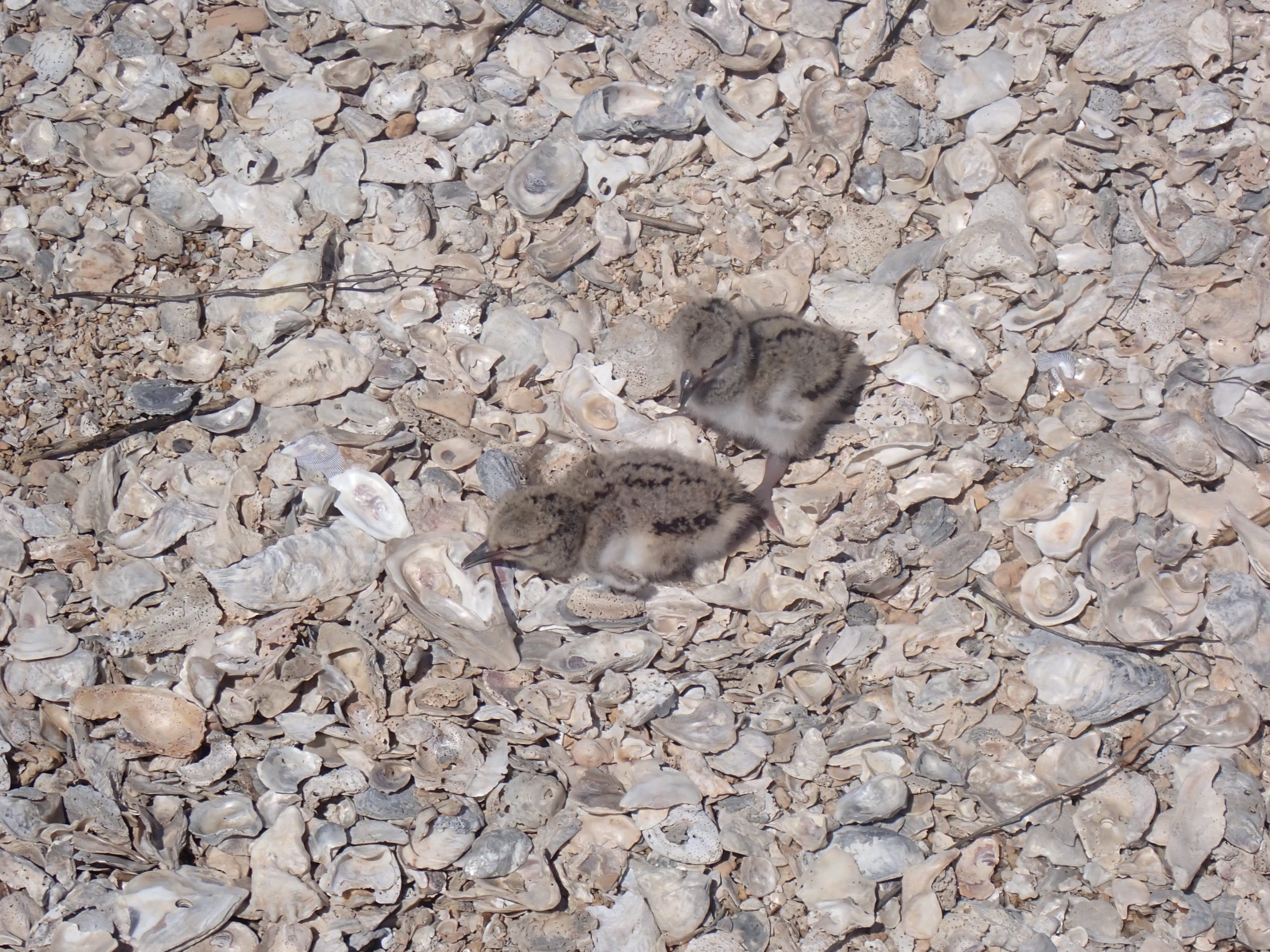By Rebecca Bracken
Welcome back to the Oystercatcher Diaries! The past two weeks have been a busy time for us, so Sue stepped in to help out again. Those oystercatchers just can’t get rid of her!
In East Matagorda Bay, LF and M4 nest still hasn’t hatched. I bet it hatched right after we left! Both were on their island and closely watched us when we went up to check.
We were excited to see that both 25 and unbanded and F8A and unbanded have nests on the ground! F8A and mate are now nesting on a small island further from the intercoastal from where they normally nest, in an area we call Chinquapin. They had 1 egg when we found it. 25 and unbanded were already incubating their 3 eggs, which thankfully were only a few days old.
In the Galveston area, things are really starting to ramp up! We think the pipe is finally gone, or at least removed enough that we can get around it. Up at Zimmerman Point and Malone reef, neither 20 and unbanded nor LR and unbanded have a nest yet, but they tend to be late nesters anyway. In Swan Lake, 11 and unbanded keep hanging out on the breakwater or on the reef not looking suspicious at all. They’re really sneaky birds, so we’re keeping a close eye on them!
K7 had a nest with 2 eggs when we found it a few weeks ago, but the eggs were gone this week. We don’t think they hatched yet, but both K7 and unbanded came flying in when Sue approached the nest site. We’ll check again next week for chicks, just in case!
Sue couldn’t find X3 and unbanded anywhere near their territory, and they were out on the reef the week before, but 39 and unbanded have been hanging out near their normal nesting location. No nest yet, but they had a nice scrape so maybe soon!
Over on Struve, HM and X7 have not been on their territory, though X7 was found hanging out with 12 and unbanded last week! E5A and unbanded are spending time on the docks near the island, so no nest for them yet. LT and JA’s nest hatched about a week and a half ago, and now have 3 adorable chicks to raise! This past week, they were in their territory, but no obvious signs of chicks. They’re really good parents and are good at keeping their chicks hidden. Hopefully that was the case! YK and unbanded have at least 1 chick as well, which was found hidden in the vegetation at the end of the island.
Alan, Elena, and new PhD student Meredith were along 2 weeks ago to help me find nests, but we couldn’t get to Jigsaw because of the pipe. We also couldn’t see the island because some dense fog rolled in making visibility very poor! Thankfully, Sue finally made it to Jigsaw last week and found a nest for YE and unbanded. She also found X2 and W2Y; it’s the first time we’ve seen them in quite a while!
On Galveston Island, Sue found W8W and Y0X. Further south at Gangs Bayou, X5X and an unbanded bird were hanging out, as well as X4Y, X8X, and a second unbanded oystercatcher. No recent signs of C8A. A4A and unbanded were back on their territory finally, and were joined by a couple of Caspian Terns.
The birds on South and North Deer islands are finally busy. We hadn’t been able to reach those sites for a few weeks because of the pipe, but Sue caught us up last week! A1A and unbanded were in their territory last week and were acting very suspicious. Sue looked for a nest but didn’t see one. We don’t think they could have slipped chicks past us, but we’ll look again next week. A5A was found in A5A’s territory this week, so not much happening there either!
Sue found Y7 on a nest near a spot we had seen the pair at a few weeks ago. The nest was brand new; glad we didn’t miss that one! We almost missed the nest for F1A and E2A. It’s been a while since we could get to their territory and they almost snuck one by us! Their nest has two eggs, and is relatively close to hatching.
On North Deer, Sue was able to get to C1A and unbanded’s territory and found their nest with 3 eggs. She was also able to get to YM and E8A’s territory. I had been suspicious for a few weeks that they had a nest but the pipe was blocking our access to their territory so I’m glad Sue was finally able to get there! She found a nest with 3 eggs that was close to hatching as well.
Most of the birds have not been consistently on Marker 52 so far this year. Two weeks ago, we only saw FR and unbanded, and JJ and unbanded. We haven’t J6 and UF for a few weeks nor JC and the new mate. J6 and UF are probably hiding a nest somewhere, so we’ll take another look next week. FR and unbanded’s eggs hatched and he has 2 wonderful chicks to raise! He let Sue know as well; he took off calling and circling the boat when she got close to the island.
Finally, on the Tiki Spoil island, Y2 and the new mate W1W are acting like they have a nest but we haven’t been able to find it yet. E4A and unbanded’s eggs hatched and they have at least two chicks! Sue thinks they moved their chicks to the main part of that island to hide them in all of the vegetation, so we’re going to have a hard time finding them when it’s time to band them! Hopefully they’ll give us some obvious signs of where they are, but more than likely we’ll just have to talk a walk and find them.
We have to do some boat repair this week, but hopefully we’ll get back out next week!
If you like oystercatchers and you want to support this project, you can make a donation (thank you!) on our website here. And how could anyone not like oystercatchers! You can also adopt a pair of oystercatchers to support this project if you’d like. If you adopt a pair, you will receive an adoption certificate for your birds and I will update you monthly on their progress throughout the breeding season. All adoption funds will be used to fund our work for the oystercatchers.
Current Stats for upper Texas coast from Swan Lake to East Matagorda Bay: 9 nests being incubated, 1 failed nests, 3 nests with unfledged chicks, 1 nest with undetermined status, 0 chicks fledged
Note: All trapping and banding for this project is in accordance with federal and state permits issued to Rebecca Bracken, GCBO Conservation Research Director. Bird handling by volunteers is only permitted in the presence of Rebecca Bracken or Susan Heath and volunteers are trained in proper bird handling techniques

